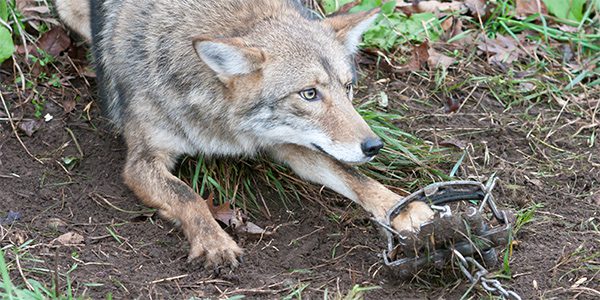Historical Archive for Reference Only
Drilling effects on clean air
Drilling Pollution and Solutions
Clean Air Standards for Oil and Gas Drilling Set to Get Stronger
In 2009, WildEarth Guardians and the San Juan Citizens Alliance reached a legal settlement with the Environmental Protection Agency committing the agency to update federal regulations limiting air pollution from oil and gas drilling operations nationwide. That settlement culminated with a promising July 28, 2011 proposal from the EPA to comprehensively update federal air quality regulations.
Drilling Away Clean Air?
Oil and gas drilling is fast becoming one of the largest sources of air pollution in the United States, increasingly putting public health and welfare at serious risk. Drilling operations, including oil and natural gas production, natural gas processing, natural gas distribution and transmission, and storage operations release a number of harmful pollutants that are making skies smoggier, hazier, and more toxic to breathe, and they’re all fueling global warming.
See the New York Times video on air pollution from oil and gas drilling, featuring WildEarth Guardians’ Climate and Energy Program Director, Jeremy Nichols.
Put simply, oil and gas drilling is a messy business. This has been made worse by the advent of hydraulic fracturing and shale gas drilling, which has brought drilling booms – and in turn pollution booms – to places that previously never had to deal with drilling.
In the West, drilling is fueling high ground-level ozone levels in Colorado, Montana, New Mexico, Wyoming, and Utah. A recent study found that there is a “clear potential for oil and gas development to negatively affect regional O3 [ozone] concentrations in the western United States, including several treasured national parks and wilderness areas in the Four Corners region.”
In Texas, drilling near schools and homes is releasing toxic fumes. And in the northeast, drilling in Pennsylvania, West Virginia and beyond is threatening to undermine years of hard-earned progress in cutting air pollution.
Not only that, the oil and gas industry releases massive amounts of methane, a greenhouse gas that is 21 times more potent than carbon dioxide. All told, the industry is responsible for 38% of all methane emissions in the United States, or 3.8% of all greenhouse gases.
Compounding this further, current federal regulations for oil and gas drilling are woefully outdated. Some are more than 20 years old and they fail to limit emissions of several toxic chemicals, greenhouse gases, and regulate a number of sources of air pollution. In 2010, the EPA reported that current regulations fall short of sufficiently controlling air pollution.
An Air of Opportunity
In response to WildEarth Guardians’ lawsuit, the EPA has thankfully proposed to update federal air quality standards for the oil and gas industry. The gist is clear: either safeguard clean air or stop drilling.
Once finalized, the proposed regulations would set new standards controlling air pollution from fracked wells and other sources of harmful pollution, tighten controls on cancer-causing emissions, strengthen standards limiting air pollution from natural gas processing plants, and ensure that cost-effective controls are mobilized across the nation. Among the highlights:
- The proposed rules would generate a net savings of $30 million annually due to increased recovery of methane, otherwise known as natural gas. This means the rules would actually cost nothing.
- The proposed rules would reduce volatile organic compound (VOC) emissions by 540,000 tons, an industry-wide reduction of 25%. VOCs react with sunlight to form ground-level ozone, the key ingredient of smog and contain other toxic compounds.
- The proposed rules would reduce methane emissions by 3.4 million tons, which is equal to 65 million metric tons of carbon dioxide equivalent, a reduction of about 26%. This will be like eliminating the carbon dioxide emissions of 15 coal-fired power plants.
- The proposed rules would reduce toxic air pollutants, such as benzene, a known carcinogen, by 38,000 tons, a 30% reduction.
And because state air quality regulations must at least be as stringent as federal regulations, the final rules will ultimately provide a stronger safety net for public health.
Certainly there are shortcomings: the standards do not directly regulate methane as a greenhouse gas, despite the U.S. Supreme Court’s ruling in Massachusetts v. EPA that the EPA is legally obligated to regulate greenhouse gases. And there continue to be exemptions under the Clean Air Act that allow the oil and gas industry to spew too much cancer causing pollution (which fortunately are being targeted by the BREATHE Act).
Despite this, these rules are a major step forward for clean air throughout the United States and we applaud the EPA for seizing this opportunity with such a bold proposal.
What The Future Holds
To be clear, fossil fuels, including natural gas, are no substitute for clean energy. Every dollar invested now in natural gas unfortunately is a dollar denied to rooftop solar, wind farms, and greater efficiencies. And of course, oil and gas drilling inherently poses significant dangers to our air, our water, and our lands.
Yet as we push for a full transition from fossil fuels, we must address the impacts that current development is having on our health and environment. These proposed clean air rules promise major improvements for peoples’ lives and communities. Importantly, they promise to continue exposing the true cost of drilling and to make the case for real clean energy solutions.
Stay tuned for alerts from WildEarth Guardians on how you can weigh in to make a difference on these new rules. Public hearings will be scheduled for the end of September in Denver, Dallas, and Pittsburgh. Your voice will help these rules become the clean air reality we desperately need.
